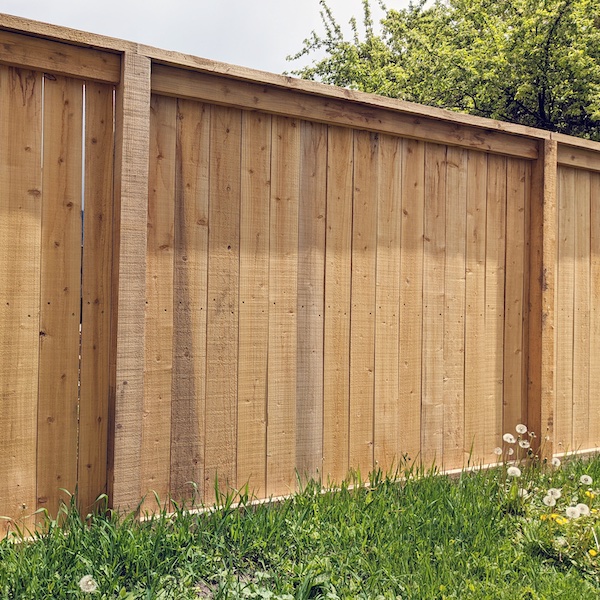All Categories
Featured

As businesses and homeowners alike come to be much more eco conscious, locating lasting and green fence products is a crucial consideration. Whether you're looking to build a fencing for privacy, security, or aesthetic appeal, picking materials that lessen your ecological footprint can assist safeguard the earth. In this message, we will certainly discover several environmentally friendly secure fencing alternatives, each offering unique advantages for your home and the atmosphere.
- Bamboo Secure Fencing: A Renewable Resource. Bamboo is commonly recognized as one of one of the most sustainable and green secure fencing products readily available today. As a grass instead of a tree, bamboo expands promptly and can reach full maturation in just 3 to 5 years, making it a highly sustainable source.
Ecological Advantages: Bamboo absorbs more co2 than many various other plants, aiding offset greenhouse gases. In addition, bamboo requires minimal chemicals and fertilizers, making it a healthier option for the setting. Toughness: Properly treated bamboo is immune to pests and moisture, meaning it can stand up to the elements better than various other timber options. Aesthetic Charm: Bamboo offers a clean, contemporary look that works well with various landscaping styles, from exotic yards to contemporary city designs. While bamboo secure fencing is long lasting, it does require proper care to keep its durability, such as normal cleaning and routine securing.
- Recycled Wood Fence: Granting New Life to Old Materials. Recycled timber is an excellent eco-friendly choice for those that want the natural beauty of timber fence without contributing to deforestation. This product is often sourced from old structures, pallets, or other repurposed wood items, decreasing the demand for newly gathered timber.

Ecological Benefits: Utilizing reclaimed wood assists decrease the demand to reduce brand-new trees and can likewise stop important products from finishing up in land fills. Toughness: Depending upon the kind of wood and therapy it gets, recycled timber fencings can be just as resilient as brand-new wood, particularly if kept properly with sealants and weatherproofing. Visual Allure: Recycled timber fencings carry a rustic charm and can be stained or repainted to fit your personal style. The primary consideration with recycled timber is its maintenance. Gradually, wood can end up being prone to rot, insect damages, and weathering, so normal maintenance is necessary to prolong the life of your fencing.
- Steel Fence: Long Lasting and Recyclable. Aluminum and steel secure fencing, particularly when sourced from recycled products, provides a strong, green alternative to standard wood secure fencing. These steels are 100% recyclable, meaning they can be repurposed forever without shedding high quality.

Ecological Advantages: Metals like aluminum and steel minimize the need for brand-new mining and basic material extraction, both of which have considerable environmental influences. Additionally, recycling metals calls for much less power compared to producing brand-new metal from resources. Longevity: Steel fences are extremely strong, resistant to weathering, and need little maintenance compared to wood options. Visual Charm: Steel fences can be developed in smooth, modern-day styles, or more traditional looks, providing convenience for any type of building. While steel fences are low-maintenance and sturdy, they are not as effective at giving privacy compared to wood or vinyl choices as a result of the rooms between the bars or slats.
- Living Fences: All-natural and Environment-friendly. Living fencings, made from thick hedges, shrubs, or trees, offer a natural and environmentally pleasant alternative to typical fencing. Not only do they develop a personal privacy obstacle, however they also contribute to the setting by sustaining wildlife and enhancing air quality.
Ecological Benefits: Living fences absorb co2, enhance dirt high quality, and provide environments for birds and various other wild animals. In addition, they decrease sound pollution and enhance air quality by filtering pollutants. Toughness: While living fences require even more upkeep than various other materials (e.g., trimming, watering), they can be exceptionally resilient if properly preserved. Aesthetic Charm: Living fencings develop a lovely, natural boundary that boosts the landscape and offers a natural and unique appearance compared to conventional fence choices. The vital downside of living fences is that they call for recurring upkeep and treatment, consisting of normal cutting and parasite control.
- Hemp Secure Fencing: Sustainable and solid. Hemp is a fast-growing and sustainable plant that can be made use of to develop solid, green fencing. Hemp fencing is made from all-natural hemp fibers, which are durable, eco-friendly, and resistant to insects.
Environmental Benefits: Hemp proliferates and needs little water or pesticides. It additionally helps withdraw carbon, minimizing greenhouse gases in the ambience. When the fence is no more needed, hemp is biodegradable and can be composted. Durability: Hemp is naturally immune to mold and pests, which aids it stand up to numerous climate condition and stay clear of using severe chemicals. Sustainability: Hemp farming is less resource-intensive compared to various other plants and aids keep soil health with plant turning. Hemp fencings are a fairly brand-new choice on the market, and they might not be as commonly readily available as other products. Furthermore, they might not be as typically utilized for high-security applications.
Verdict: Choose Eco-Friendly Fence for a Lasting Future. There are numerous green fence materials to take into consideration, each offering distinct advantages for your home and the atmosphere. Whether you choose bamboo, recycled wood, metal, living fences, or hemp, each choice enables you to create a attractive and functional boundary while decreasing your environmental footprint. By choosing sustainable products, you add to a greener future and support the growing activity toward responsible construction and landscaping practices.
Latest Posts
Recognizing Roof Warranties: What Homeowners Must Know
Published May 23, 25
1 min read
Explore Cut Costs on Car Maintenance with Montclare Auto Repair’s Exclusive Deals
Published May 21, 25
1 min read
Selecting the Right Roofing System Shade: Influence On Power Efficiency
Published May 19, 25
1 min read